Flavorful plants that taste like licorice can be used in a variety of ways in the kitchen. They can be used to flavor teas, desserts, and other dishes.
If you are a fan of licorice, you might be interested in knowing about spices that have a similar flavor profile. Several plants and spices taste like licorice, and one of the most popular ones is anise.
The flavor category of greens that taste like licorice is unique, and it is characterized by a dominant anise flavor. The taste of these herbs is due to the presence of concentrated essential oils, which are a natural organic compound.
While fennel and anise, or licorice-flavored herbs have slightly different flavor characteristics, their leaves and flowers chemistry is similar, and their oils smell similar.
However, anise is not the only herb that has a licorice-like flavor profile. In this article, we will explore the different condiments that taste like licorice and how you can use them in your life.

Contents
Anise Hyssop
Anise hyssop is an herb that is native to North America. Its leaves and flowers have a licorice-like flavor, which makes it a popular ingredient in teas and desserts.
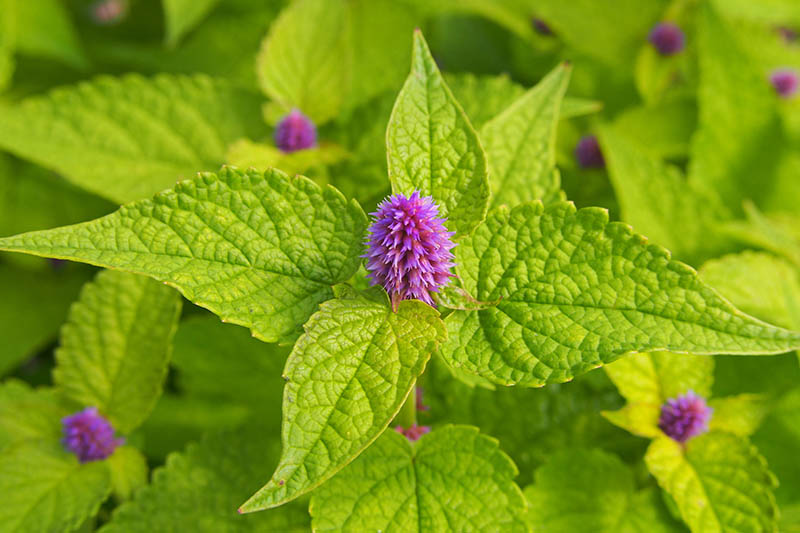
The leaves of anise hyssop can be used to make herb butter, and the flowers can be used to garnish salads. Anise hyssop has a sweet, floral flavor with a hint of licorice.
Aside from its culinary uses, anise hyssop has a long history of medicinal use.
This herb has been used for centuries to treat a variety of ailments, including colds, coughs, and digestive problems.
Anise hyssop is believed to have both antiviral and antibacterial properties, which means it can help boost your immune system and fight off infections.
In addition to its medicinal properties, it is also a favorite among gardeners. The herb has beautiful purple flowers that attract bees, butterflies, and other pollinators.
It’s also a hardy plant that can thrive in a variety of growing conditions, making it a great addition to any garden or landscape.
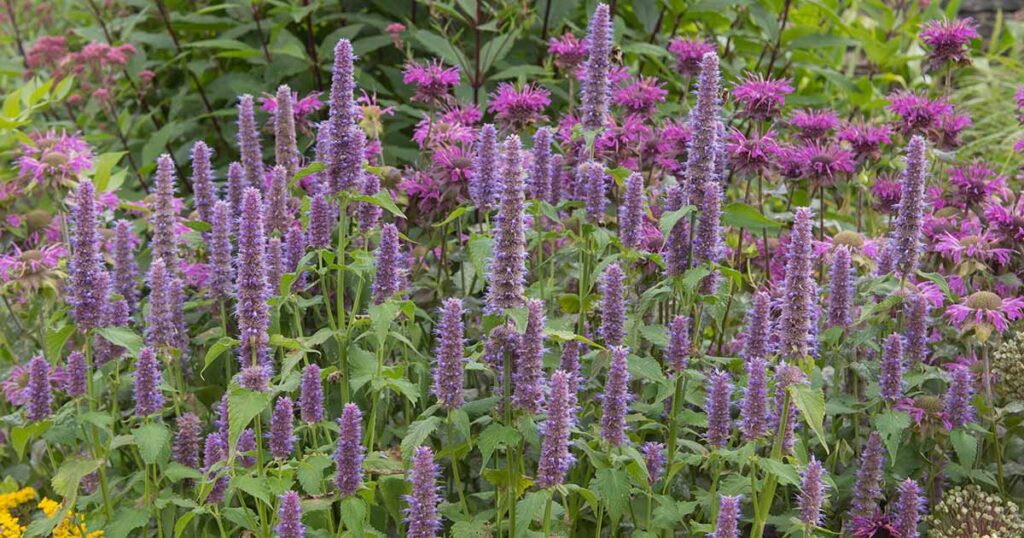
Anise and fennel seeds
Anise seeds are the most popular herb that tastes like licorice. They are commonly used in Indian and Italian foods and are an essential ingredient in making curry powder.
They have slightly different flavor profiles and characteristics than anise hyssop, but they are still a great substitute for licorice.
They are also used to flavor liqueurs, such as absinthe, and are an essential ingredient in making pastis, a popular French liqueur.
Anise and fennel have a licorice-like flavor and fennel seed have a softer taste than anise seed.
They are commonly used in spice blend flavors. Anise and fennel seed are essential ingredients in making herbes de Provence, a famous French blend.
Fennel fronds are commonly used in making spice blends and herb butter. They can also be used to garnish salads and other dishes. It is important to notice that fennel seed milder and a bit sweeter than anise seed.
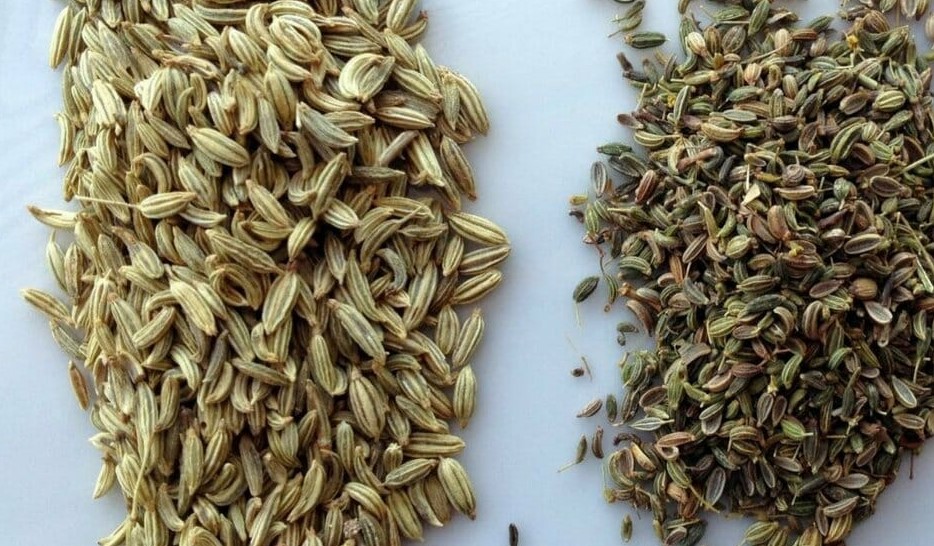
Sweet Cicely
Sweet cicely is an herb that has a sweeter flavor than anise or fennel. It is commonly used in making herb butters and is an essential ingredient in fines herbes, a French herb blend.
It is also an excellent addition to savory dishes. The herb has a licorice-like flavor with a hint of anise flavor and is a well-known herb for its medicinal properties.
Sweet cicely has been used for centuries to treat colds, coughs, and digestive problems.
Furthermore, it is a rich source of antioxidants, essential oils, and other beneficial compounds.
The leaves and flowers of the plant are particularly rich in vitamin C, which is an essential nutrient that supports immune function and helps the body to absorb iron.
The herb also contains flavonoids, which are plant compounds that have anti-inflammatory and anti-cancer properties. The herb is a natural source of flavonoids, which are plant-based antioxidants that help protect against cellular damage caused by free radicals.
Additionally, sweet cicely’s essential oils have been used to treat a variety of ailments, including respiratory problems, digestive issues, and skin conditions.
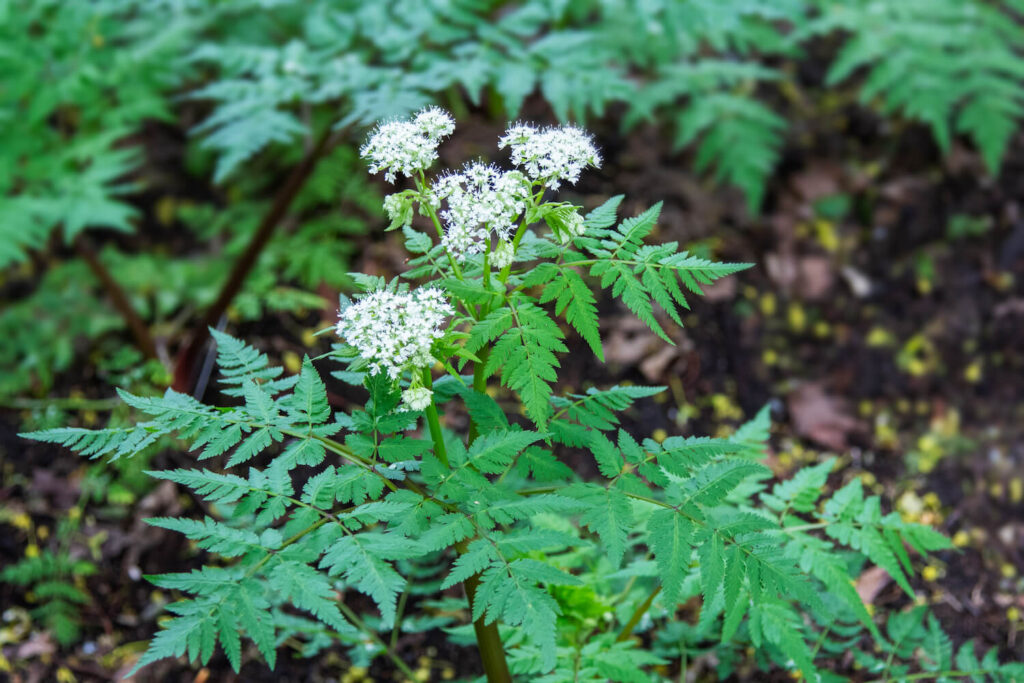
Mexican Tarragon
It is an herb that has a licorice flavor with hints of vanilla and is an excellent addition to an egg dish. It is commonly used in Mexican and Southwestern cuisine and is an essential ingredient in mole sauce.
Aside from its culinary uses, it is also known for its medicinal properties.
It has been used for centuries to treat digestive problems and respiratory infections.
The herb is rich in antioxidants and has anti-inflammatory properties that can help reduce inflammation in the body.
Herb is also believed to have a calming effect on the nervous system, making it a popular herb for treating anxiety and stress.
In addition to its health benefits, it is easy to grow and maintain, making it a great addition to any herb garden. It thrives in warm, sunny locations and requires minimal care.
With its unique flavor and numerous health benefits, it is a must-have herb for any food lover and health enthusiast.
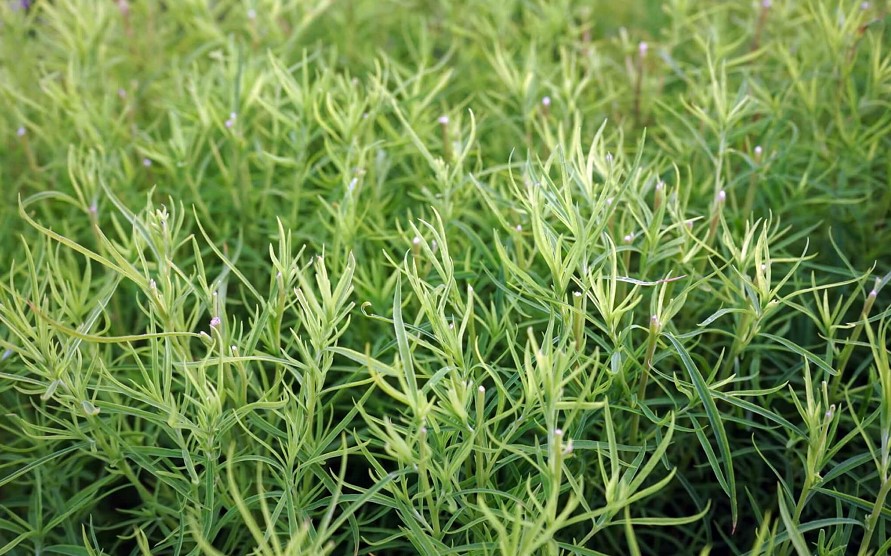
Star Anise
Star anise’s seed is commonly used in Chinese cuisine. It has a licorice-like flavor and is an essential ingredient in making Chinese five-spice powder.
However, it is not just valued for its culinary applications. This herb has a long history of medicinal use and has been used for centuries to treat a variety of ailments.
Its medicinal properties are well-documented, and it is believed to be effective in treating digestive problems, respiratory infections, and menstrual cramps.
Due to its numerous health benefits, star anise’s seed is often used in traditional Chinese medicine, where it is highly revered as a healing herb.
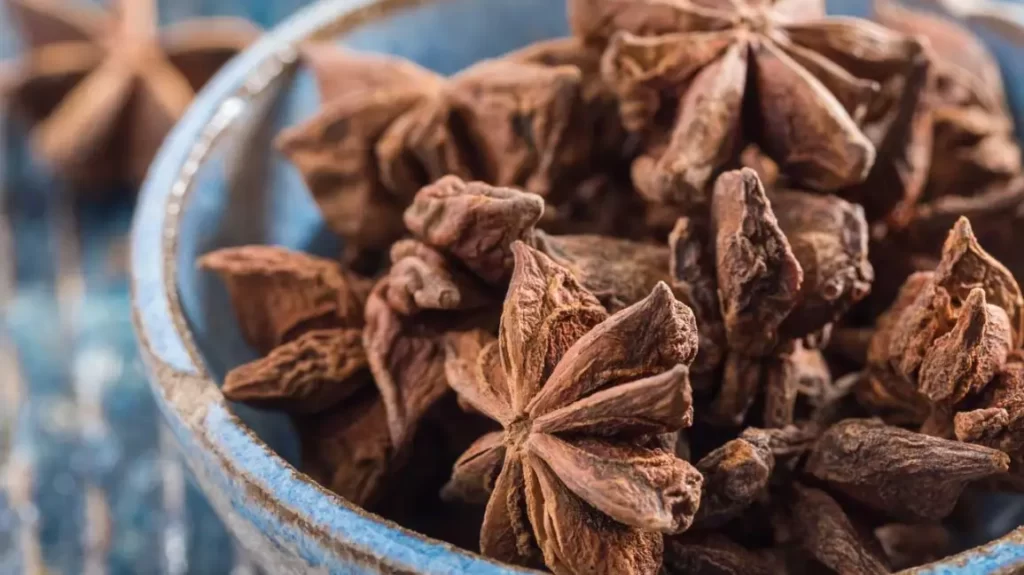
Dill Seeds
They have a similar flavor to anise, but they have a slightly sweeter taste. They are commonly used in preparing a pickle jar and are an essential ingredient in making dill weed.
These plant foods have a sweet, anise-like flavor and are known for their medicinal properties.
Due to these seeds’ chemistry compounds, they have been used for centuries to treat digestive problems and respiratory infections due to their natural anti-inflammatory and anti-bacterial properties.
Additionally, they are believed to have a calming effect on the body, making them a popular choice for those who suffer from anxiety or stress.

The chemistry of herbs that taste like licorice
The root chemistry of these spices is what gives them their distinct flavor. The leaves and flowers of these aromatic plants contain a natural organic compound that gives them their distinct flavor.
The main chemical constituents are flavonoid glycosides, which are responsible for their sweet, anise-like flavor. These compounds also have anti-inflammatory and antioxidant properties.
Herbs that taste like licorice, such as anise, fennel, and tarragon, are known for their unique flavors and aromas, which are attributed to the various chemical compounds present in their leaves and flowers’ chemistry and seeds’ chemistry.
The leaves and flowers’ chemistry compounds contain anethole, a compound that has a sweet, spicy, and slightly bitter taste, and is also responsible for the licorice-like flavor.
Anethole is a phytochemical that belongs to the terpenoid family and is found in high concentrations in these condiments, which explains why they are often used as a natural flavoring agent in food and beverages.
Moreover, the leaves and flowers of these condiments also contain other chemical compounds such as estragole, which gives tarragon its unique flavor, and fenchone, which contributes to the flavor of fennel.
These compounds are also believed to have therapeutic properties that offer numerous health benefits. For instance, estragole is known for its anti-inflammatory and anti-bacterial properties, while fenchone has been shown to have anti-spasmodic effects that help to relieve stomach discomfort.

Seeds’ chemistry
In addition to their flavorful compounds, they also contain beneficial antioxidants and essential oils that have been used in traditional medicine for their therapeutic properties.
The seeds’ chemistry is also rich in nutrients such as protein, fiber, and minerals like iron and calcium, making them a nutritious addition to any diet.
The seeds’ chemistry is also unique, as they contain higher concentrations of anethole than their leaves and flowers, which is why they are often used as a natural flavoring agent in confectionery and baked goods.
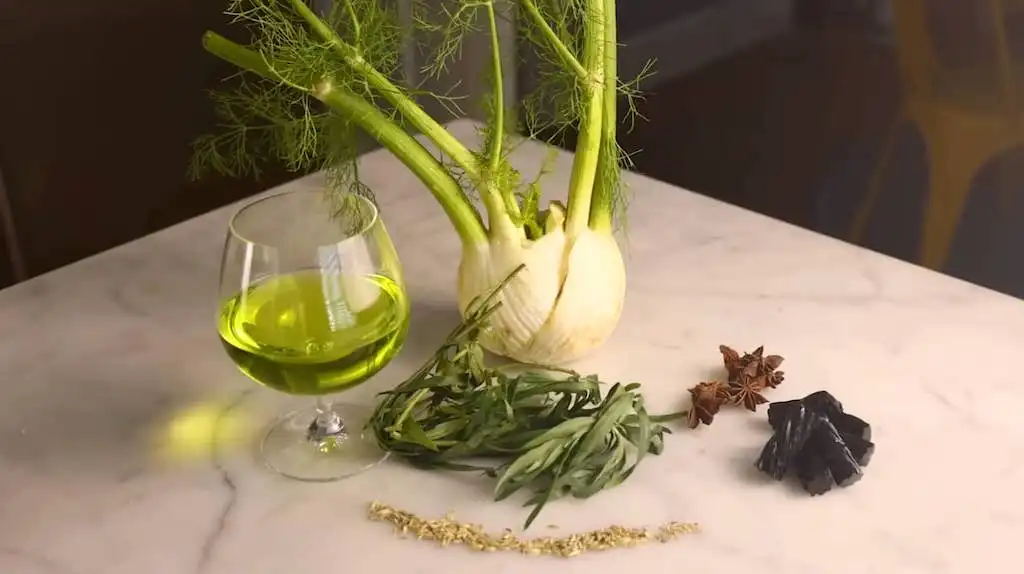
FAQ
What spices taste like liquorice?
Anise seed is the most common spice that tastes like licorice.
They are used in many dishes, such as Indian and Italian foods, and are an essential ingredient in making curry powder.
Fennel seeds are also commonly used in spice blends and have a licorice-like flavor.
What else tastes like black licorice?
In addition to spices, there are several herbs and other foods that have a similar flavor to black licorice.
These include anise hyssop, licorice mint, fennel bulbs, star anise, and licorice root. Some alcoholic beverages taste like black licorice, such as absinthe and ouzo.
What herbs taste like anise?
Several herbs have a taste similar to anise. These include anise hyssop, fennel seed, sweet cicely, and Mexican tarragon.
These herbs are commonly used in flavorful dishes, teas, and desserts. Some of them are also used to flavor liqueurs, such as absinthe and sambuca.

Conclusion
In conclusion, if you are a fan of licorice, you might enjoy using other herbs too that have a similar flavor profile.
Anise and fennel seed are the most popular herbs that taste like licorice. However, there are a few other herbs that have comparable flavors.
These herbs can be used in a variety of ways in the kitchen and can add a unique flavor to your dishes.
If you are interested in learning more about herbs, you can visit the International Herb Association website.
Including herbs that taste like licorice in your cooking can add a new dimension of flavor to your dishes.
These are versatile and can be used in a variety of ways, from flavoring teas and desserts to seasoning savory food.
Anise and fennel seeds are the most popular ones that taste like licorice, but there are a few other herbs with similar flavored herbs such as savory and French tarragon.
In summary, incorporating herbs that taste like anise and fennel into your cooking can add a unique flavor to your dishes and provide medicinal benefits.
Whether you use anise seed, fennel seed, or licorice-flavored herbs, you can explore new culinary possibilities and expand your knowledge of seasonings.
Read More: Herb That Tastes Like Licorice



There is one more item that “smacks” of [black] licorice: poppy seeds–especially when sweetened and mixed with a citrus extract. I have a batch of Romanian cozonac [brioche] filled with homemade poppy-seed paste in the oven right now. I adore licorice, and–for years–have noticed a strong similarity between the tastes/smells. I’ve never seen anyone else make this observation, and I am willing to “bet” that people who like licorice also like poppy-seed paste!